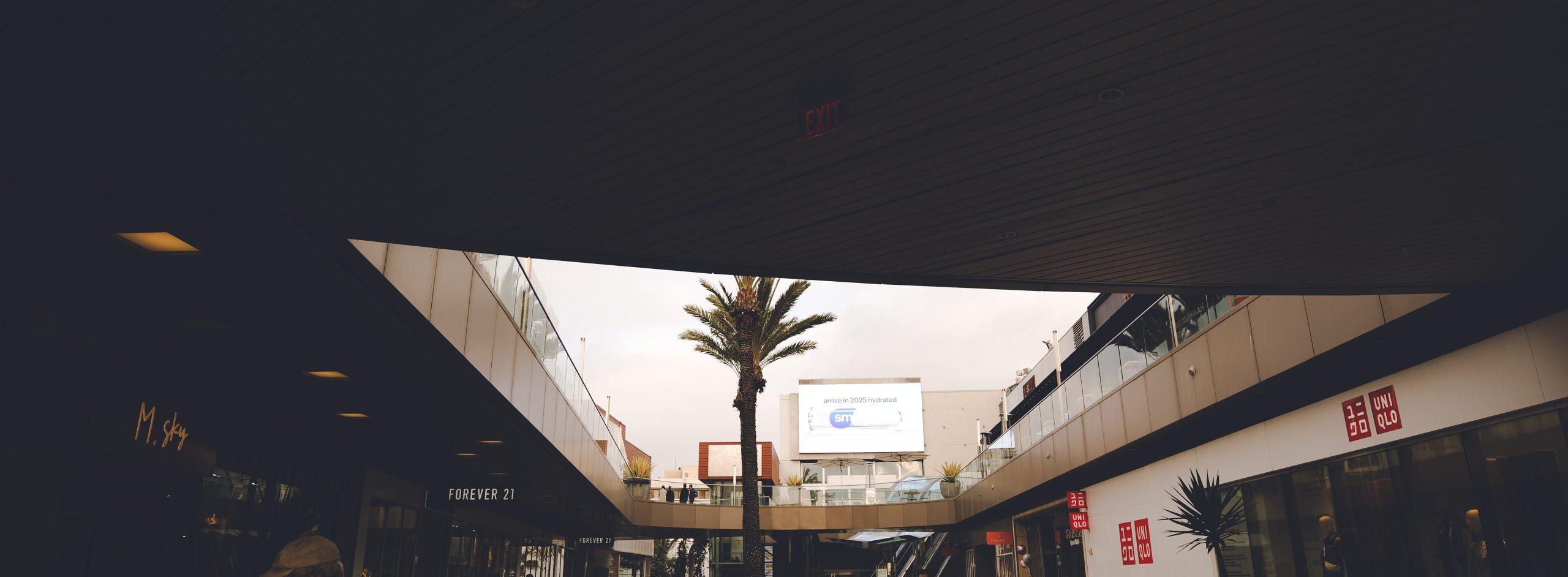Lumix S9 – A Perfect Camera?
No camera is perfect, but honestly this is the first camera I purchased that I felt was built just for me. While people complain about a variety of issues with this camera, some of these complaints are blatantly false while others are a matter of preference. In this article I’ll go through what this camera does good, and some of the issues piled against it.
Full Frame Cameras
I’ve seen idiotic posts trying to compare the Fuji X-M5 to this camera (as they both omit an EVF), yet these two cameras are a world apart. The Lumix S9 is a Full Frame 35mm sensor camera. That means it collects a lot more detail on the sensor than an APS-C or other cropped sensors.
Sensor Size
35mm became a film standard for the average person. There are larger film sizes of course. There is the Medium format and Large Format film. My dad shot mostly with 35mm film, but he did have a large format camera rig that he used on occasion. It’s quite obvious how the quality metrics work with film sizes. The larger the film plate the more detail or data it will capture. Light and color also tends to render better.
When digital sensors replaced the film back, it became the same concept. Unlike film, the cost of making a digital sensor increases drastically as it gets bigger. Because of this cost constraint, the original digital cameras used cropped sensors – meaning they are much smaller than a full 35mm standard size.
Early on Nikon released some full frame 35mm sensors in their pro line of camera bodies, but these cameras were very expensive. As technology improved, full frame sensors became more consumer available with the Canon 5D. Today, Sony, Nikon and Panasonic all have full frame 35mm sensors. Fuji skipped the 35mm size and went from APS-C to their GFX line that’s a digital medium format sensor.
Cropped Sensor
There are several cropped standards for digital cameras: APS-C and the Micro Four Thirds. The advantage of a cropped sensor is the camera can be priced cheaper overall. Another advantage is the relative reach of a lens for a price point. A 50mm lens on an APS-C sensor will have the appearance of a 75mm lens.
The advantage of reach is that if a person who shoots long telephoto (300mm+) can buy a cheaper lens to get the same reach.
There are disadvantages of cropped sensors:
- Photo quality
- Lacking detail for large prints
- Light and color rendition
- Wide angle is more costly
Since a cropped sensor extends the appearance of a lens, a wide angle lens, like a 24mm becomes closer to 40mm. To get 24mm one has to get a very wide angle lens which is likely more expensive.
Comparing Cropped vs. Full Frame
Below are shots at 100% from Fuji’s APS-C sensor camera body, the X-T5:
Source Image (dpreview): HERE

The focus plane is soft at 100%. There’s also lacking detail and a bit of confusion in the shot. the branches appear muddied up. In fact most of the earth tones here are muddied up.
Example of a Full Frame image at 100% shot on a Lumix S9:

Notice the nuances of the detail. At 100% crop the focus plane is detailed, but not over sharpened. It’s detailed with natural detail that filled a larger sensor size. Also, notice the color range is better. Earth tones are not muddied up but separated in a natural looking way.
Outside 100% Crop
We don’t look at images at 100%. We look at our screen resolution, usually on a platform like X, Instagram, etc. Even the screen resolution of the X-T5 looks sharp, until we zoom in. So is it a big deal?
If sharing images, no. Just like a flagship cell phone, shots done will appear sharp because of a trick of resolution. When we shoot on a 50MP cell phone or camera, the shot is shrunk down to screen resolution, often constrained even more to fit in a web page or social media square. Compressing a large resolution, into a smaller resolution produces the sensation of sharpness.
When you print an 11×14″ or in my case a 3 foot by 4 foot canvas, APS-C will suffer in detail loss, whereas full frame will look clean with loads of detail.
Beyond prints, sometimes a shot will look off. The smaller sensors may struggle in low light, or shots heavy with earth tones. When they struggle you’ll see a lack of detail and colors tend to be muddied up. Here’s an example, from Flickr.
Yet shooting with RAW and doing post production you might be able to clear it all up and keep it sharp and colorful.
Lumix S9 – What’s Amazing
The Panasonic Lumix S9 is a full frame camera in a small mirrorless body. It is packed with features, such as having a built in XPAN crop (65:24), fast autofocus, great image stabilization, 6k Open Gate video, unlimited film simulations and color grading options.
Straight out of Camera
One of the biggest selling points is the idea that the Lumix cameras (s5II and S9) are capable of unlimited looks and presets. Unlike other brands have limited looks and feel emulations, you can add as many as you want from the free app, create your own, or buy professional grade looks for the camera. I’ve covered the details on the S9’s capability to generate a varied set of color emulations:
If you want a softer, grainy, harsh black white, with a pulled down white point… you can do that. If you prefer a digital b/w with harsh tones, you can do that. If you want that Leica Monochrome look, yeah that too. You can also simulate the orange and teal look found in film movies. If you want a Kodachrome look, yeah it’s available. Fuji film emulations are there as well.
Where Fuji capitalized on film simulations, Lumix has that plus any look and feel beyond film.
This is the biggest sell for me. I use several LUTs to see the shot on screen and frame the scene accordingly. I love it. I can emulate the lush colors from a Ricoh GRIII, to the Leica Monochrome color profiles, to having shots that are the closest to film I’ve ever seen.
XPAN crop
I didn’t even know about the Xpan crop when I bought the camera. I’ve always wanted an Xpan crop but it comes at a cost. The cheapest camera that frames and produces the crop is the Fuji GFX (at $5k). However, this camera has it, which now makes it the cheapest Xpan crop camera.

Above is an example of the Xpan crop ratio. It’s a one shot pano. This is great for wide areas to capture. In fact, the above image I had printed and it looks amazing in it’s large frame!
Hybrid and Cropped Zoom Option!
Earlier in the article I explained the effective reach of a cropped sensor, which is lost in Full Frame… but not on the S9. The S9 has a hybrid zoom option, that shifts into a crop of the sensor on the long end, giving that same effective range!
Open Gate 6k Video
If you’re into video that takes advantage of the full sensor frame, the S9 does that @ 6k. I don’t shoot much in video, but I have shot in open gate 6k. It looks amazing.
Stabilization
Most cameras today have stabilization. This camera has several levels of stabilization, each that bump up the stability with a minor crop into the image.
Vintage Lenses
Virtually every camera can make use of vintage lenses, but cropped sensors will suffer from not rendering the lens as it was intended. To truly get a vintage vibe, you’ll need to shoot on a full frame body.
Fast Auto Focus
Comparing to my Fuji – the autofocus of Panasonic is a world apart. Continuous autofocus is always spot on. It’s so good. I don’t have a modern Sony, so I can’t compare but it must be comparable to Sony from what people describe.
Price Point
The Lumix S9 sells brand new in kit, between $1300 and $1500. There’s absolutely nothing in this price point that does the above. We’re talking about a 35mm full frame camera, that produces unlimited color looks, has xpan crop, can shoot 6k open gate, has a mode for hybrid zoom/cropped sensor and more.
Lumix S9 – False Complaints
I’ve seen a lot of negativity against this camera, usually from Fuji fans. Below are the most common false statements that are circulating against the camera.
LUTs & Film Simulations
Some people are saying that Fuji film simulations are using a technology beyond LUTs. It’s simply false. I cover that in more detail in the LUT article linked above.
Electronic Shutter Limitations
When I got my first Fuji camera (X-T2) I followed advice to turn off the mechanical shutter. I have shot with only electronic shutter for the past 5 years on my Fuji system(s). The amount of issues I’ve had were probably less than 10.
People tell me, “with electronic shutter you can’t capture fast moving objects.” FALSE. It doesn’t work like that. In fact I was told that I won’t be able to photograph my kids as they move around so fast. Ha! I’ve never had a problem. In fact I’ve had more problems taking photos of my kids on my Fuji, due to it’s slow autofocus.
Electronic shutters can sometimes have distortion if you are in a fast moving vehicle (train, or car) and are shooting out a window and something comes between you and the focus plan… like a telephone pole, or a sign. Sometimes the shot will show the object bending. This happened to me on Fuji about 10 times in 5 years… but I don’t shoot out of moving vehicles very often. Recently I went on a roadtrip with the s9 and oddly, I never had an issue with any distortion while shooting out the window.
People also complain that with an electronic shutter you’ll get a flicker in video when under incandescent lighting. I don’t know how Lumix resolved this, but they did. They actually have a menu option to reduce flicker for video, but mine option is “OFF.” I’ve shot outside under incandescent lights, as well as indoors and never had an issue.
Lumix S9 – Complaints for Some
There are changes to this camera that some people will struggle with. In my honest opinion, I think these complaints are blown out of proportion. Clearly these same issues in other brands have not been attacked like Lumix is attacked.
Lack of an EVF
The S9 does not have an EVF. For me, it’s not an issue. When I switched to digital photography in 2004, I stopped using an EVF altogether. I’ve never had an issue looking at the screen outdoors, nor have I had issues with any screen on brands I’ve owned (Nikon, Canon, Sony, Fuji and now Panasonic).
Sony has several Full Frame cameras that are also missing an EVF – yet I’ve never seen the hatred towards those brands that Lumix is getting.
Fuji recently released the X-M5, which is missing an EVF, and again there’s a significant amount of hate.
All of a sudden it seems everyone needs to put their camera up to their eyes. I think most of this is just false, as I rarely see someone shoot this way. Sure on YouTube everyone appears to shoot this way, even on cameras without an EVF (!), but in the real world I don’t see it very often. It’s a matter of personal taste and if you need to frame your shot through a low resolution eyepiece… by all means don’t buy this camera, or any camera that has a missing EVF.
There are people who buy adapters to have a View Finder attached to the S9, but of course it isn’t connected to the camera to show the scene as it would render with the color, aspect ratio, ec.
Lacking a Hot Shoe
It is odd that Panasonic did this, and I must admit it’s a legitimate complaint. Although I don’t shoot flash photography, for those that do, this camera will not trigger an attached flash. You’ll need to use continuous lighting.
For me I only shoot in the scenes light, and never shoot flash. But for those that want to do portrait work in a studio, you’ll be better off with the Lumix S5II, a Sony or a Nikon ZF.
Range of Lenses
This is one issue that I do feel. The camera lacks a lot of lens variety. The most common lens mount is probably the Sony E mount, then Nikon or Fuji. This camera uses an L Mount, which is a Leica specific mounting. It has a wide opening and this tends to make the lenses very big.
Every autofocus lens that Panasonic makes tends to be large. They tend to be at least 4″ long. The idea of an autofocus pancake lens doesn’t yet exist.
Panasonic has attempted to create small form factor lenses, but they tend to be manual focus with a fixed f-stop. I think it’s a poor option, and I wonder why there seems to be this limitation when Sony and Nikon have made some small lenses on their full frame bodies.
Summary
There’s a lot of fake info against the new Lumix S9. But at it’s price point there’s simply nothing that competes. We’re talking about a high quality full frame 35mm sensor that also produces xpan crop, has unlimited color/film styles, and has sharp/fast autofocus along with a variety of other features. If you can live without an EVF, it’s certainly a camera to consider.









